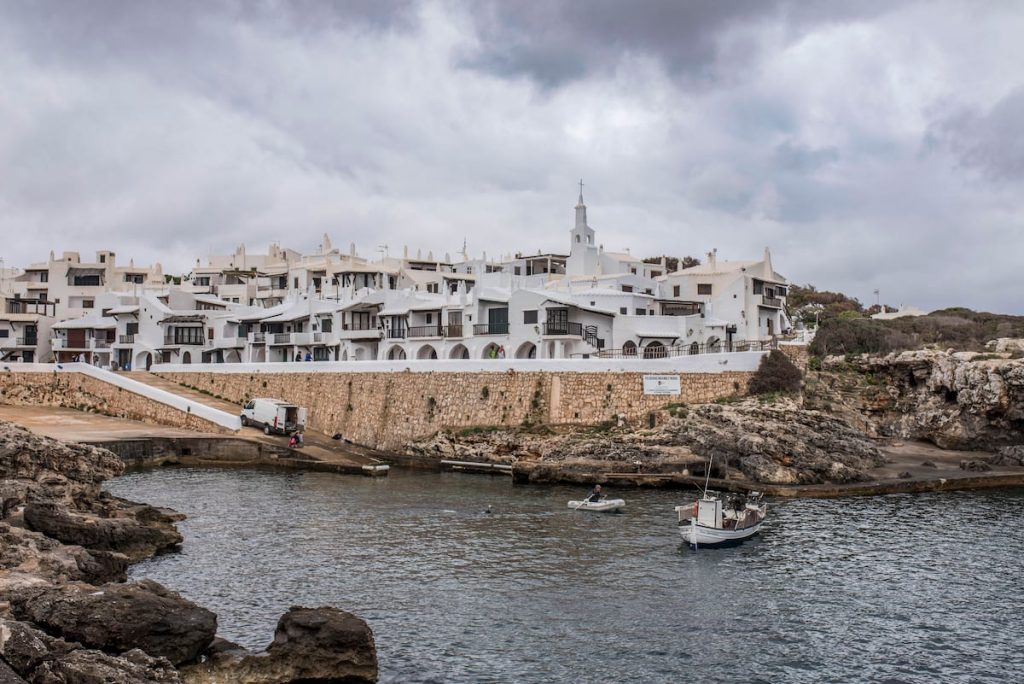Binibeca Vell, a fishing village in Menorca, is often compared to the Greek island of Mykonos due to its similar architecture. Designed by architect Barba Corsini and surveyor Antonio Sintes in 1964, the village has become a popular tourist attraction with over 800,000 visitors in the summer months. However, the village is actually a private development on land owned by the municipality of Sant Lluís, with 165 houses spread over 8,000 square meters by the sea. The influx of tourists has brought economic benefits to the island, but also challenges such as waste disposal and interactions between residents and disrespectful visitors.
The saturation of visitors in the summer season, with 1.6 million travelers visiting Menorca last year, has led to tensions between residents seeking rest and the lack of assistance from the government to address the effects of overcrowding. The community of property owners has restricted public access to the village, allowing visits only from 11 am to 8 pm. If there is no response from the authorities, they may vote to completely close the village to visitors. Despite being a major tourist attraction, the villagers have been advocating for assistance in maintaining the village, as it is often promoted by public administrations.
In January 2023, the community reached an agreement with the Menorca Council, promising to regulate bus arrivals and improve tourist guides’ training. However, the new government has not renewed the agreement, citing the village’s private nature. The lack of support from the local government has left residents to deal with issues such as waste management and inadequate maintenance, despite the economic dependence of many families in the area on tourism-related jobs.
During the summer months, Binibeca Vell sees an increase in both residents and incidents with disrespectful tourists. Despite the challenges, the residents continue to invest in maintaining the village’s appearance, spending around 100,000 euros annually on cleaning and upkeep. With only 30 permanent residents, the village faces issues with tourists who sometimes overstep boundaries in their pursuit of the perfect photo, leading to conflicts with residents who feel their privacy is being invaded.
The community is frustrated with the lack of support from the local government and believes that privatization is the end goal for the conservative government. The economic impact of the village on the surrounding area is significant, with approximately 100 families relying on tourism-related jobs for their livelihood. As tensions rise between residents and visitors, the future of open access to the village is uncertain, with restrictions being considered to address the challenges of overcrowding and lack of support from authorities.


